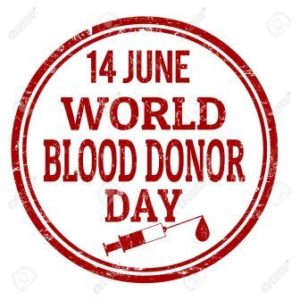Every year, on 14 June, comes World Blood Donor Day (WBDD). The event serves to raise awareness of the need for safe blood and blood products and to thank blood donors for their life-saving gifts of blood.
Every pint of blood donated can save more than 3 lives! So if you began donating blood at age 18 and donated every 90 days until you reached 60, you would have donated 30 gallons of blood, potentially helping save more than 500 lives!
But despite there being no harmful or even profound effects of blood donation on the body, there exists an acute shortfall of more than 2.5 million pints in India. Currently, blood donation shortage is 9%, lesser than a 17% blood shortage that existed in 2014.

But as the number of patients requiring blood transfusion keeps increasing, the trouble for the Indian government to arrange units of blood grows more acute. In certain treatments like chemotherapy for cancer, patients need blood daily. Car accident victims may even require up to 100 units of blood. Additionally, blood can’t be manufactured, so the only source of acquiring blood is through donation.
If you are considering donating blood to save one of the million patients battling for their life, here are a few things you should know first.
1. Donating blood is completely safe
New and sterile equipment is used for each donor when s/he donates blood, so it is impossible to acquire any communicable disease or infection through blood donation. The modern disposable needs are replaced with new ones with every donor. Also, there is no dizziness or weakness felt after you donate blood. This is primarily because blood is only 7% of your body’s weight.
2. You can donate whole blood or its specific components
There are 4 types of components in blood. These are red cells, platelets, plasma and cryoprecipitate. Each of these, except cryoprecipitate can be derived from a unit of blood donated. Since patients in general only need a specific component of blood, potentially, each pint can save 3 lives. The process of donating components is called apheresis.
3. Only type O negative blood can be transfused to blood types
Extremely helpful in emergency situations, this type of blood is called the universal donor blood. This is because O negative blood type has no proteins in its red blood cells, meaning that it can be accepted by everyone with no chances of rejection. This is also the safest for newborn infants. But only 6.6% of the world population has this blood type.
4. Blood donation eligibility
According to guidelines by the Ministry of Health there are 6 important parameters that determine whether you are eligible to donate blood. These are:
Age and weight – The minimum prescribed weight is 50 kgs for an eligible donor. S/he should be between 18-60 years of age.
Body temperature – You should have normal body temperature with oral temperature not exceeding 37.5 degree celsius.
Overall Health – The person should not be suffering from communicable diseases, HIV, ailments like cancer and diabetes or tuberculosis, asthma, rabies, etc.
Haemoglobin level – The minimum prescribed level for blood donation is 12.5 g/dL.
Pulse: You should have a pulse rate between 50 to 100 without irregularities.
Blood Pressure – Eligible donors are ones with a diastolic BP between 50-100 mm Hg, and Systolic BP between 100-180 mm Hg.
5. You have to wait for 56 days to donate again
Those who donate whole blood have to weight for a minimum of 8 weeks before donating blood again. The body takes time to reproduce enough quality of red blood cells, However, the plasma is recreated only within a span of few hours. So platelet donors may donate them again after 7 days. Additionally, if you are donating red blood cells, you will have to wait for 16 weeks for another donation.
[curated]


